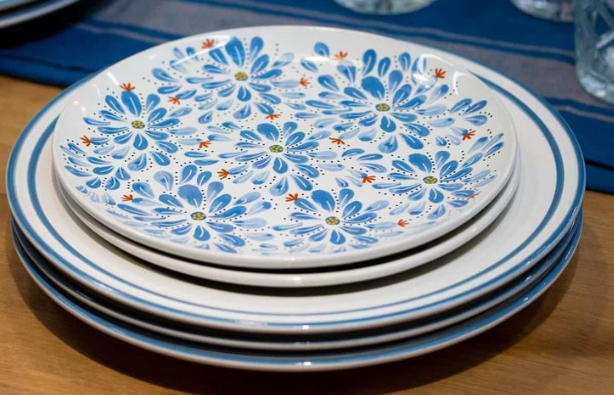Lead in Corelle dishes is something many people worry about. Many families use Corelle dishes every day for meals, but questions about safety keep popping up. People often wonder if using Corelle plates or bowls can make food unsafe. Lead is a heavy metal that can be harmful if swallowed in large amounts. Luckily, most Corelle dishes made today are safe and meet strict safety rules. However, older Corelle dishes, especially those made before 2000, might have tiny amounts of lead in their paint or decoration. It’s important to know which dishes are safe and how to use them carefully. Learning about lead in Corelle dishes can help protect your family, especially kids, because lead can affect health if it builds up over time. Being informed lets you enjoy your meals without worry and keep your kitchen safe.
Corelle dishes are very popular because they are light, strong, and easy to clean. Even though modern Corelle dishes are considered safe, checking the labels or production year is smart. Lead in Corelle dishes mostly comes from decorative patterns or painted designs. If a dish has chips or cracks, it may release small amounts of lead if it is old. Using older dishes for decoration only is a safe choice. For everyday use, newer Corelle dishes made after 2000 are tested to meet strict food safety guidelines and usually do not have lead. People who want extra safety can wash their dishes before first use and avoid heating food in very old decorative dishes. Understanding how to handle dishes with care keeps meals safe. Families should also store dishes properly, avoiding harsh scrubbing that may damage the coating. By following these tips, everyone can enjoy meals safely without worrying about lead in Corelle dishes.
Table of Contents
How Lead in Corelle Dishes Can Affect Your Health
Lead is a toxic metal that can affect the body if it enters through food or drink. Even small amounts over time can be harmful, especially to children. Lead can cause stomach problems, learning difficulties, and other health issues. Adults can also face problems with blood pressure, kidneys, or nervous system if exposed to too much lead. Luckily, modern Corelle dishes are tested for food safety and usually contain no lead in the areas that touch food. Still, older dishes or those with painted designs should be used carefully. Understanding how lead affects health helps families make safer choices when using Corelle dishes.
Are All Corelle Dishes Free from Lead?
Not all Corelle dishes are the same. Newer dishes made after the early 2000s are designed to be free from lead in the areas that touch food. Older dishes, especially vintage ones, might have tiny amounts of lead in the decoration or pattern. Corelle has updated production rules to meet strict safety guidelines. So, while most modern dishes are safe, old or collectible dishes may need special attention. Checking the production date or testing older dishes at home can help prevent accidental exposure to lead.
Old vs New Corelle Dishes: Safety Differences
Older Corelle dishes were sometimes made with paint that contained lead. Today, Corelle uses safer materials and testing to make dishes safe for eating. This is a key difference between old and new dishes. New dishes are lightweight, strong, and food-safe. Old dishes with decorative paint may not be safe for cooking or eating. People who have vintage Corelle dishes can still enjoy them safely as decoration. Avoid heating or serving food in chipped, cracked, or old painted dishes to reduce any risk of lead exposure.
Signs That Corelle Dishes May Contain Lead
Some signs may suggest that Corelle dishes contain lead:
- Chipped or cracked paint on older dishes
- Brightly colored or metallic patterns on dishes made before 2000
- Vintage labels or older manufacturing marks
If you see these signs, it’s better to test the dishes or use them only for display. Modern Corelle dishes are generally free from lead, especially in areas that touch food.
Tips to Safely Use Corelle Dishes in Your Home
Here are some simple tips for safe use:
- Use new Corelle dishes for daily meals.
- Wash dishes before first use to remove any residue.
- Avoid using chipped or cracked old dishes for cooking.
- Keep vintage dishes for decoration if unsure about safety.
- Follow manufacturer instructions on heating or dishwashing.
These steps help reduce any risk of lead exposure while still enjoying the durability and beauty of Corelle dishes.
Can Lead in Corelle Dishes Get Into Your Food?
Lead can enter food if it comes from painted or glazed surfaces. Modern Corelle dishes are tested to prevent this, but older dishes may release small amounts of lead if damaged. Acidic foods, like tomato sauce or lemon juice, may react with lead in old decorations. For this reason, it’s best to avoid cooking or serving acidic foods in vintage dishes that may have lead paint. Newer Corelle dishes are safe for all types of foods and liquids.
Conclusion
Lead in Corelle dishes is mostly a concern with older, vintage pieces. Modern Corelle dishes are generally safe and tested for food use. Families should use new dishes for eating and keep old, patterned dishes for decoration. By washing dishes before use, avoiding damaged items, and checking production years, you can enjoy meals safely. Knowing how to handle Corelle dishes properly protects children and adults from any potential lead exposure. Enjoying meals on Corelle dishes can remain worry-free when safety tips are followed.
FAQs
Q1: Are all Corelle dishes safe to use?
A: Modern Corelle dishes made after 2000 are generally safe for food. Old dishes may have lead in the paint.
Q2: Can lead from Corelle dishes harm children?
A: Yes, children are more sensitive to lead. Using newer, safe dishes reduces risk.
Q3: How can I check if my Corelle dishes have lead?
A: You can use home lead test kits or check the production year and design.



